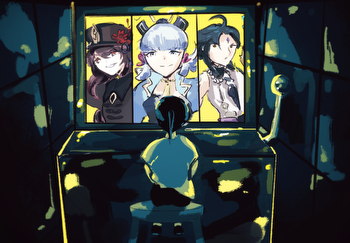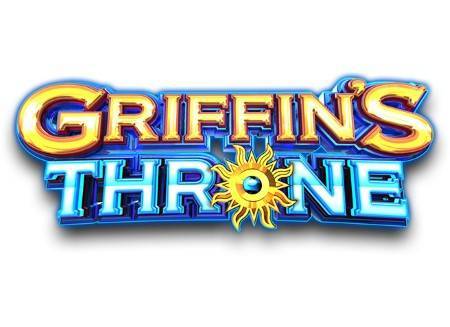The Finals: Is the Game Promoting Gambling to 13-Year-Olds?

Though it’s only been out for a few weeks, the fast-paced competitive video game, The Finals, is already raising the eyebrows of concerned parents thanks to a controversial cosmetic that can be earned in-game.
This cosmetic — a skin that converts the drum magazine of a specific gun into a spinning roulette wheel — is not the video game industry’s first brush with an online gambling scandal, and while rather innocuous, concerned individuals believe it’s only adding to an already rampant issue.
To help us figure out whether or not this cosmetic is worth worrying about, we’ll take a look at The Finals and how it — and the industry at large — handles gambling to ensure kids are kept safe.
What is The Finals and Why Should We Care?
The Finals is a brand new PvP (player versus player) video game from Embark Studios that pits teams of three players against one another. The competition is messy, with escalating tournament play and unlockable cosmetics (items that change the way things look without affecting the gameplay in any way).
This game has managed to snag itself an ESRB rating of “Teen,” meaning the Entertainment Software Rating Board views this game as being suitable for players age 13 and over.
While violent, the action is highly stylized and there is a distinct lack of gore (players explode into a shower of arcade tokens and leave behind a plastic toy when defeated) or any other mature themes — which is probably why the roulette-wheel gun cosmetic feels so out of place.
It feels suspect that a game that has gone to such lengths to be kid-friendly would pack in a nod to real-world casinos. In game design, nothing is coincidental, nothing is an accident — so why include something as potentially incendiary when it has no clear connection to the game or its content?
Exploring the Nexus Between Video Games and Online Gambling
There have been several studies done in the last few years examining the relationship between video games and online gambling. According to a study conducted by the Australian Centre for Population Health Research, the act of playing video games itself does not seem to make much difference in how players viewed gambling games and sports betting, as those outlooks are generally shaped by familial and cultural participation in said activities.
However, the same study also found that children who engaged in gambling-style games or features within their video games are .
Well… How Much Gambling is in Video Games, Then?
Unsurprisingly, there is quite a bit of gambling in modern video games and it usually comes in one of two forms:
Simulated Gambling
One of the most common representations are simulated gambling games built directly into the games themselves — like Red Dead Redemption 2’s in-game poker and blackjack, Quasar in Mass Effect, or the dice poker in the Witcher games. These are in-game representations of gambling (often using games that exist in our world) that players engage in through the character — generally bankrolled by whatever money the player has found or earned in-game.
While those games are likely to favorably color your opinion of gambling games — Red Dead Redemption 2 certainly made us think we were better poker players than we actually are — this sort of gambling is generally only seen in games rated ‘M’ for ‘Mature’ by the ESRB (suitable for players aged 17+).
Loot Boxes
On the other hand, purchasable “loot boxes” are an extremely prevalent form of gambling found in many popular games and they cut out the middle man entirely. These games offer mystery packages to players that, when purchased (using real money), add a random item to their game account.
These items range from abilities and weapons that can give players advantage in-game to rare in-game cosmetics that can even be sold or traded in some cases (providing a real-world value) — or just give a player higher status and bragging rights.
One university group found that as many as 36% of the top PC games in the Steam store contained loot boxes, and that demographic is even higher on mobile games. These loot boxes have become such a massive issue that many countries require their purchase to be age-restricted, while others have banned them entirely due largely to their addictive nature.
You have likely read many stories where a child has run up their parents’ credit cards buying loot box after loot box in an effort to unlock some elusive outfit or vehicle for their in-game avatar. With such fervent behavior, it’s hard not to draw parallels between loot-box-crazed gamers and the troubled gambler with a too-strong fondness for horses.
Surprising Links Between Video Game and Gambling Addictions
Beyond the above examples of actual and simulated gambling in video games, another concern that is often brought up is the link between compulsive gambling and excessive video game playing, as the two look pretty similar to the average observer — for good reason.
A 2019 study conducted by faculty members of the University of Lethbridge found that, while 78.5% of video gamers interviewed had participated in gambling the year before and 70.7% of the self-identified gambling participants reported playing video games, it did not appear to be a matter of cause and effect.
Instead, problem video gamers and problem gamblers both share a series of personality traits that lead to their habits getting out of control. So while an individual who has issues moderating their habits around playing video games will likely have the same problems with building healthy gambling habits, the habits themselves do not seem to create a potential problem gambler.
Underage Gambling — Who’s to Blame?
It seems pretty clear that, while a simple mini-roulette gun cosmetic is not the biggest culprit, it is just one more instance of normalized gambling for children.
Do we think that kids are going to see the roulette wheel and stop blowing up the other team long enough to create an online casino account to play roulette? Probably not.
But studies already show that when family members, marketing, or media portrays gambling in a positive light, our kids pick up on that and it colors the way they view gambling. So it is perfectly valid that parents are concerned when games rated for the 13+ crowd like The Finals — and recently Fortnite with several casino-related cosmetics — seem to be normalizing gambling, even though its representation is fairly neutral.
In fact, social media platforms like TikTok and Facebook, as well as streaming platforms like Kick and Twitch, are far more likely to impact your children’s stance on gambling than a couple of in-game cosmetics. A little bit of searching on any of those platforms and you will likely find videos or advertisements talking about how much money someone has won, how easy it is, or, in the case of some streaming platforms, you can actually watch the streamers play online slots in real time.
This is why it is so important that parents know what their children are playing, what websites they are visiting, and have candid conversations about the dangers of online gambling.
Because it’s out there, and it’s only a matter of time before someone is directly or indirectly telling your kids how cool online casino games are — if they haven’t already.
Gamers Today, Gamblers Tomorrow?
In the fast-paced world of online gaming where pixels collide and battles unfold, it’s funny that something so simple as a weapon cosmetic would push us to dive deep into the messy connection between online gambling and video games.
But when the well-being of our children is on the line, it’s important to know whether or not these games serve as gateways to real-world risk.
The roulette-themed cosmetic in The Finalsis just one glimpse of the bigger picture. Simulated gambling, loot boxes, and the precarious dance between gaming and gambling addictions raise too many questions for us to leave the matter alone.
While the experts tell us that the video games themselves might not directly influence how our children view gambling, the addition of simulated card games and fate-tempting loot boxes can blur the lines between fun and risk.
Parents will need to stay sharp and be aware of what games and other forms of entertainment their children are consuming to ensure they can educate themselves and their children on the risks in this ever-evolving digital world.
The conversation was sparked by The Finals, but it doesn’t stop there. There will undoubtedly be another game with another cosmetic down the line, underscoring the need to push for gaming environments that make sense and where the thrill of competition doesn’t accidentally become a literal gamble for our kids.





































